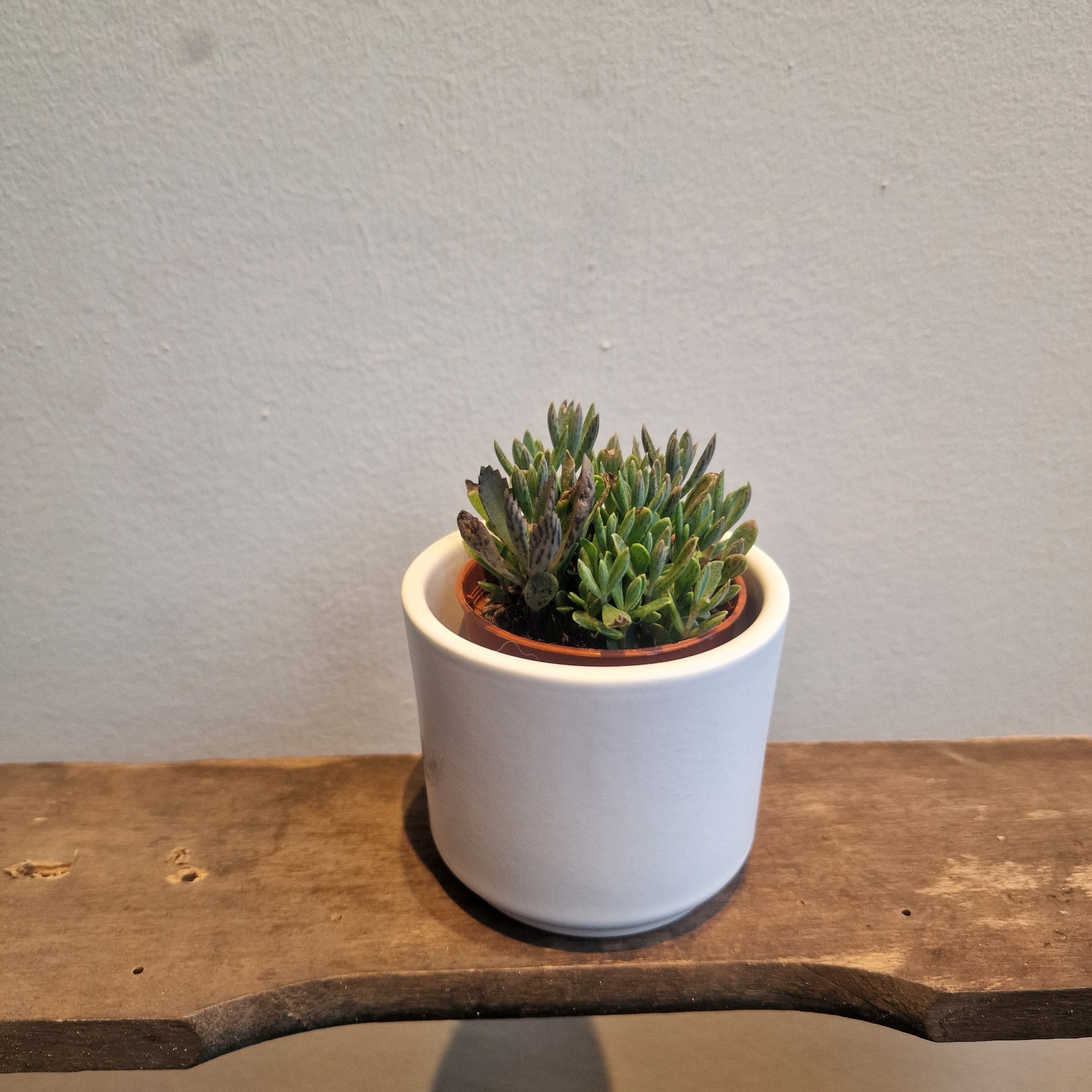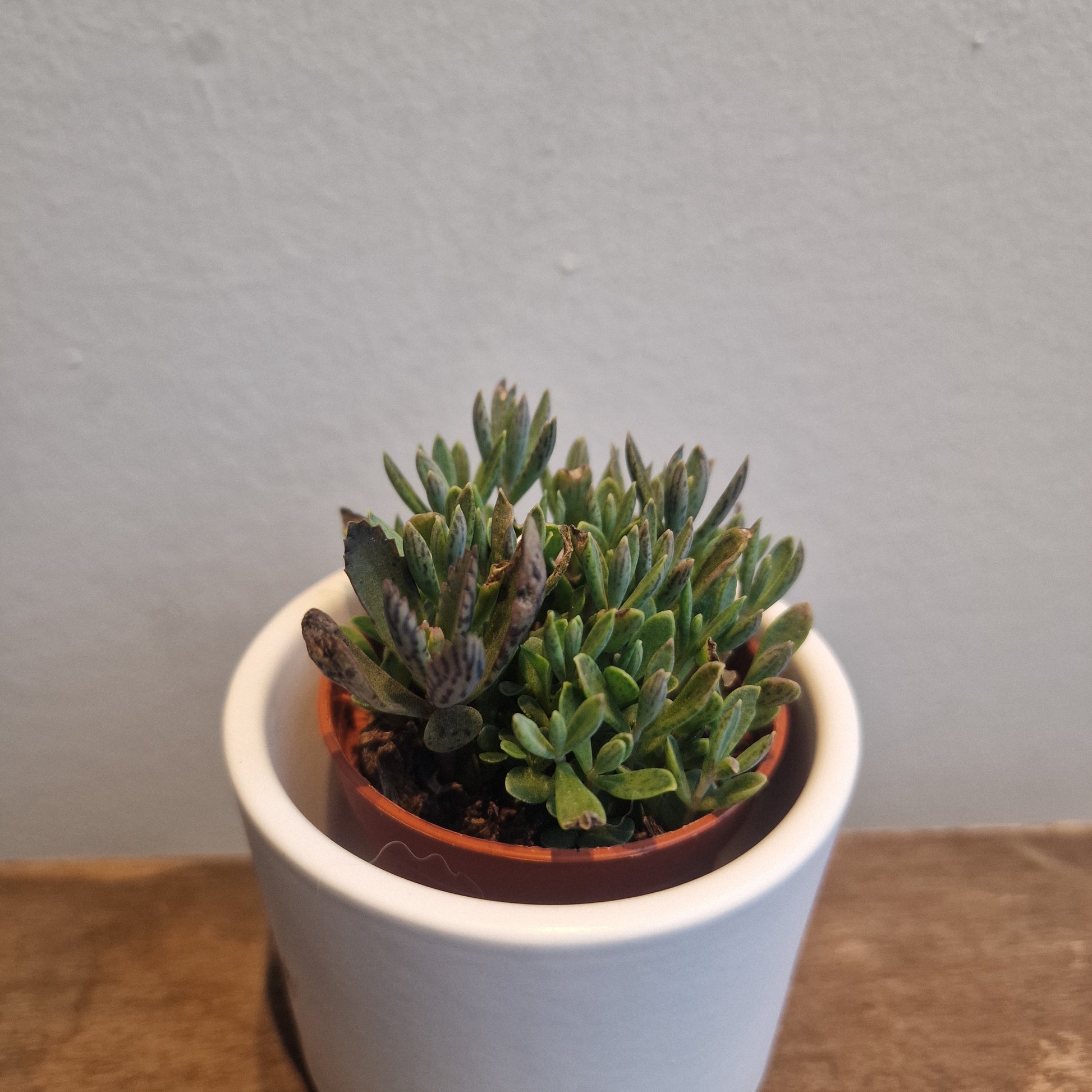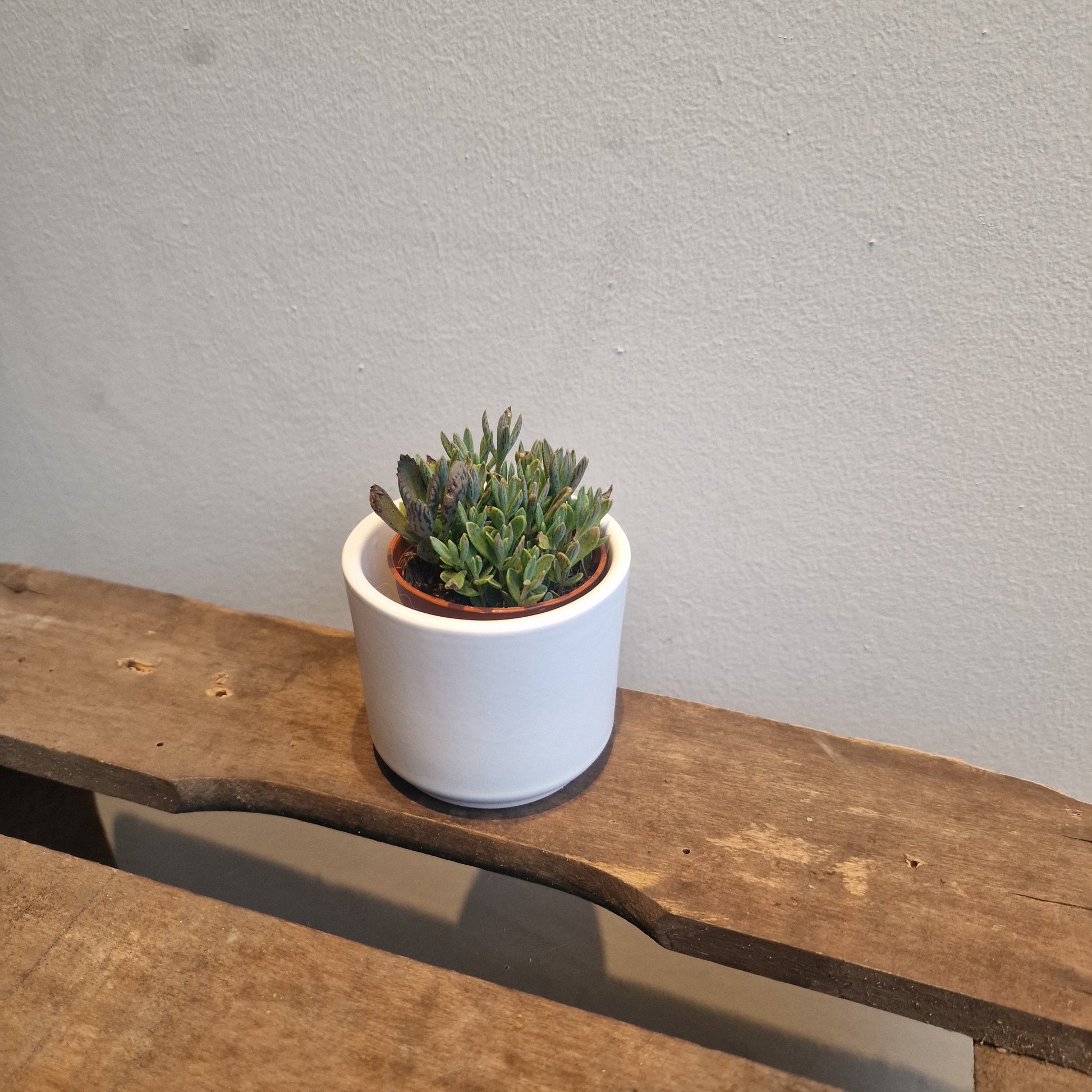Kalanchoe Daigremontiana 'Mother of thousands'
Kalanchoe Daigremontiana 'Mother of thousands'
Rated 4.9 ⭐ by 100 satisfied customers on Google
Out of stock
Couldn't load pickup availability
- Home delivery throughout Belgium
- Collection in Leuven possible
- Mother plant bomb for your windowsill
- Lifelong help for all your plant questions
The Kalanchoe Daigremontiana 'Mother of Thousands' is a striking succulent distinguished by its unique propagation method. Tiny plants form at the edges of the leaves and fall naturally into the potting soil, allowing your collection to grow without much effort. With its whimsical, architectural appearance, this succulent gem adds a tropical touch to any space.
This variety is ideal for beginner plant lovers who appreciate low-maintenance greenery. It's resilient and prefers a bright spot out of direct midday sun. A good potting mix for succulents and an airy pot will ensure it grows optimally. Combine it with other easy-care houseplants like a Monstera Minima or a Dracaena Marginata for a varied and atmospheric look.
How to care for a Kalanchoe Daigremontiana 'Mother of thousands'
Watering - Kalanchoe Daigremontiana 'Mother of thousands'
Kalanchoe Daigremontiana 'Mother of Thousands' prefers slightly moist but not soaked soil. Water only when the top layer of potting mix feels completely dry, usually biweekly. Overwatering can cause root rot, so water sparingly. Use a well-draining mix such as our cacti & succulent potting mix combined with a handful of perlite .
Light - Kalanchoe Daigremontiana 'Mother of thousands'
This succulent thrives in bright, indirect sunlight. Place it near an east- or west-facing window where it can enjoy soft morning or late afternoon sun. Too little light leads to stretched stems and fewer cuttings. Protect it from strong midday sun to prevent scorched leaf edges.
Common problems with Kalanchoe Daigremontiana 'Mother of Thousands'
Yellow leaves
If the leaves turn yellow, it's often a sign of overwatering. Check that the potting soil is well-draining and allow it to dry completely between waterings. Adjust the watering frequency and, if necessary, replace the top layer with fresh cactus potting soil .
Plant is dripping wet
Drops of moisture on the leaves indicate guttation or moisture retention due to high humidity. Reduce the humidity in the room or optimize ventilation. Keep the plant away from a damp bathroom or kitchen.
Plagues
White mealybugs or spider mites can sometimes strike when air circulation is poor. Check the undersides of the leaves regularly and, if necessary, use sticky traps for fungus gnats or an organic spray. Remove affected parts and rinse the plant gently under lukewarm water.
Roots emerge from the bottom of the pot
When roots grow through the drainage holes, it's time to repot. Choose a pot 2 cm larger in diameter and ensure adequate drainage with a layer of hydroponic clays, such as our Leca clays . At the same time, refresh the potting soil for a fresh nutrient boost.
Brown edges on the leaf margin
Brown edges are caused by too much direct sunlight or irregular watering. Move the plant to a location with indirect light and maintain a consistent watering schedule. Trim away damaged leaf edges to encourage new, healthy growth.
Frequently Asked Questions
Is the Kalanchoe Daigremontiana 'Mother of thousands' poisonous?
Kalanchoe Daigremontiana contains substances (bufadienolides) that can be toxic to pets and small children if ingested. Therefore, keep the plant out of reach or place it on a high shelf. Always wear gloves when handling it to prevent skin irritation.
What other species exist within the Kalanchoe family?
The Kalanchoe family offers a wide variety of shapes, colors, and sizes. Below is a selection of related species that will only deepen your fascination with succulents:
- Kalanchoe tomentosa (powderbox)
- Kalanchoe pinnata (Mother of cuttings)
- Kalanchoe blossfeldiana (Flaming Katy)
- Kalanchoe fedtschenkoi (Lavender leaf)
- Kalanchoe millotii (Silver Rosette)
- Kalanchoe uniflora (Hanging plant with bells)
- Kalanchoe delagoensis (Wandering succulent)
For beginners, the 'Mother of Thousands' offers a unique cutting effect and a rapid growth rate. With proper care and suitable potting soil for succulents, you can enjoy this evergreen eye-catcher for years to come. Feel free to contact us if you have any questions about repotting, fertilizing, or taking cuttings. At Plantrekkers, we not only supply the most beautiful plants, but you're never alone.
Share

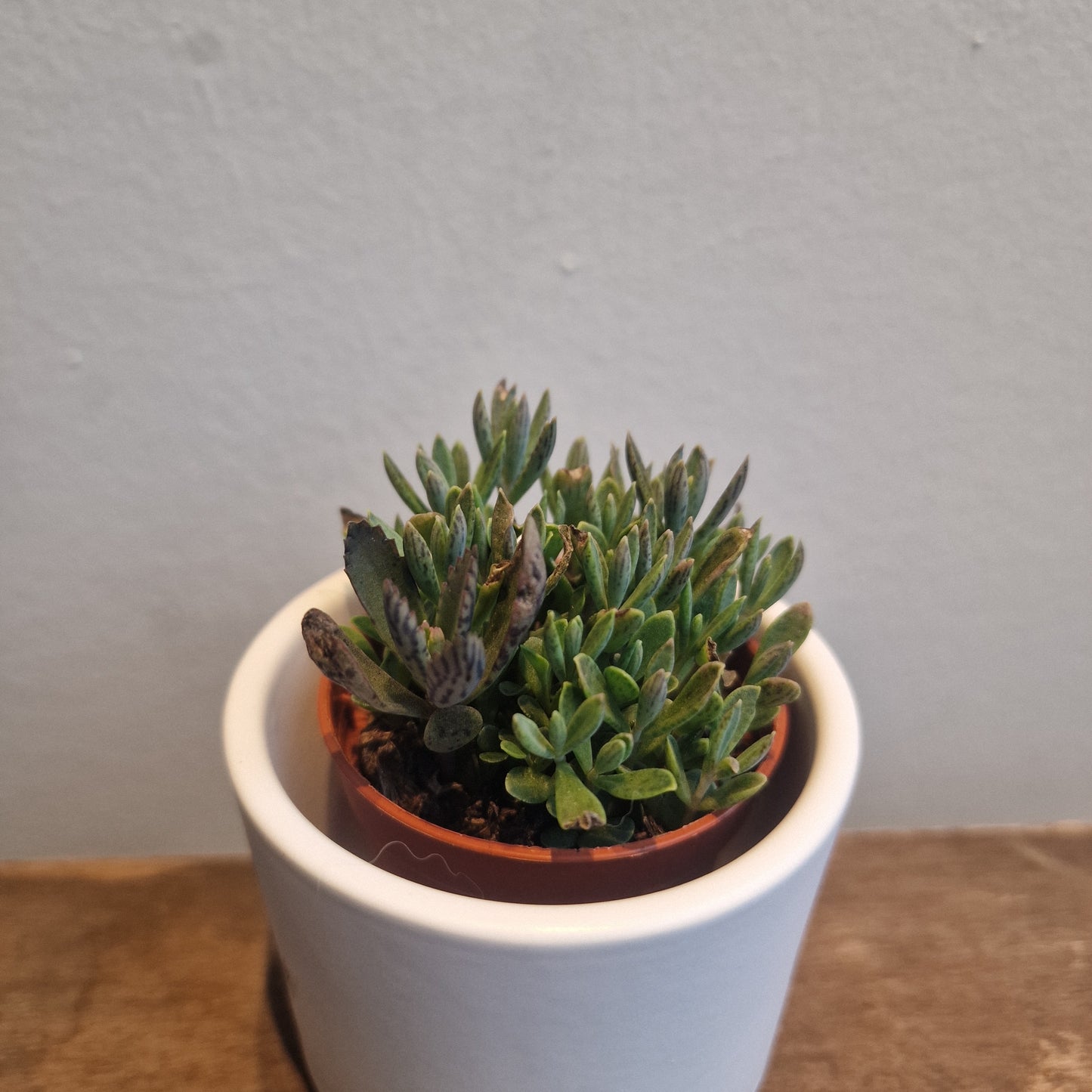
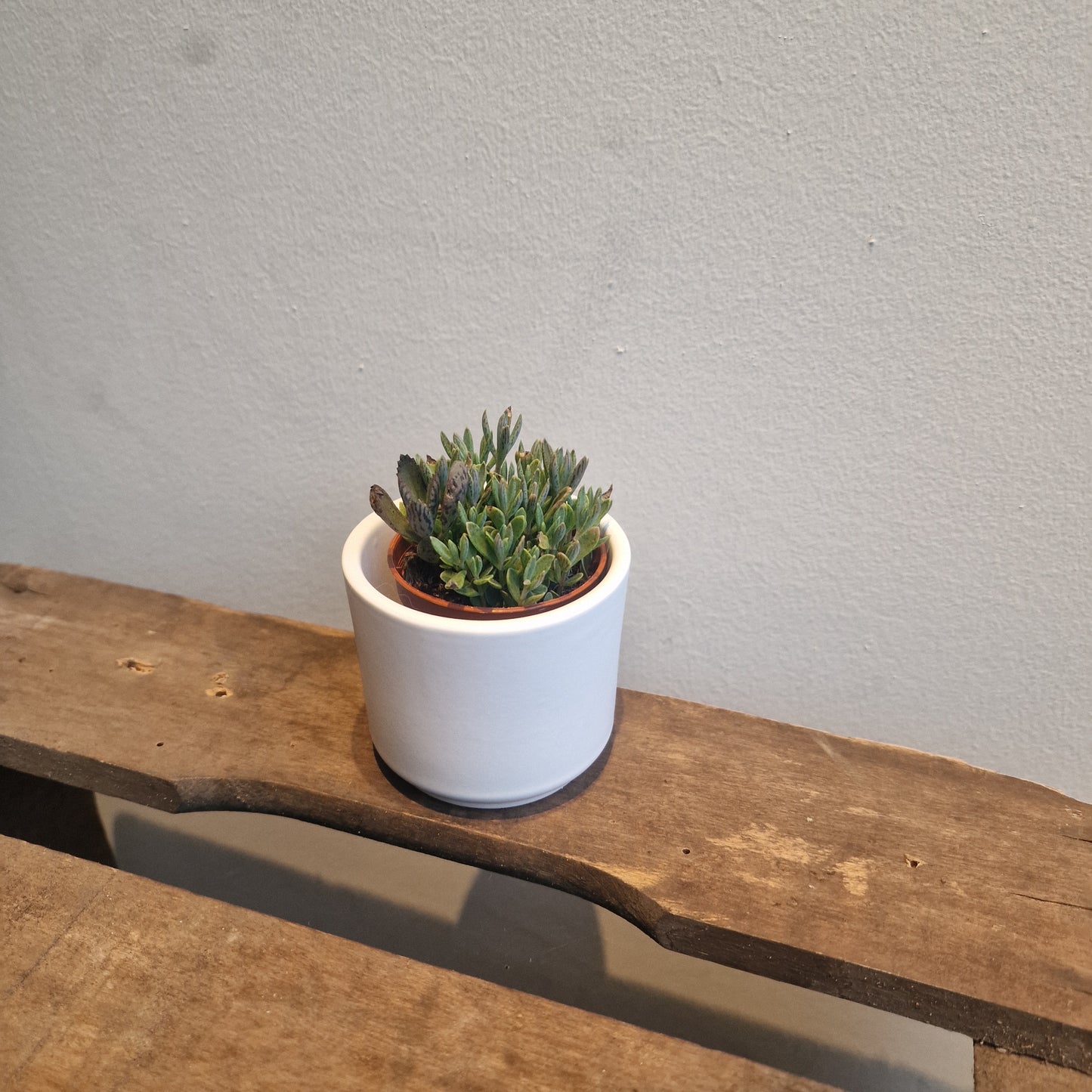
Frequently Asked Questions
How do you ship plants?
We always ship our plants well packaged and safely.
We do not ship on cold days and we also try not to ship during the weekends. This way plants are always in suboptimal conditions for a minimum time.
What is your shipping policy?
You can read our shipping policy here.
What payment methods do you accept?
We accept various payment methods online such as Bancontact, Visa, Mastercard, Paypal.
You can also pay with Ecocheques in our store in Leuven.
Can I return the products?
You can read our returns policy here.
Where do your plants come from?
Our plants always come straight from the grower to our shop. With minimal stops we prevent pests and diseases and keep the chain short!
Collections
-
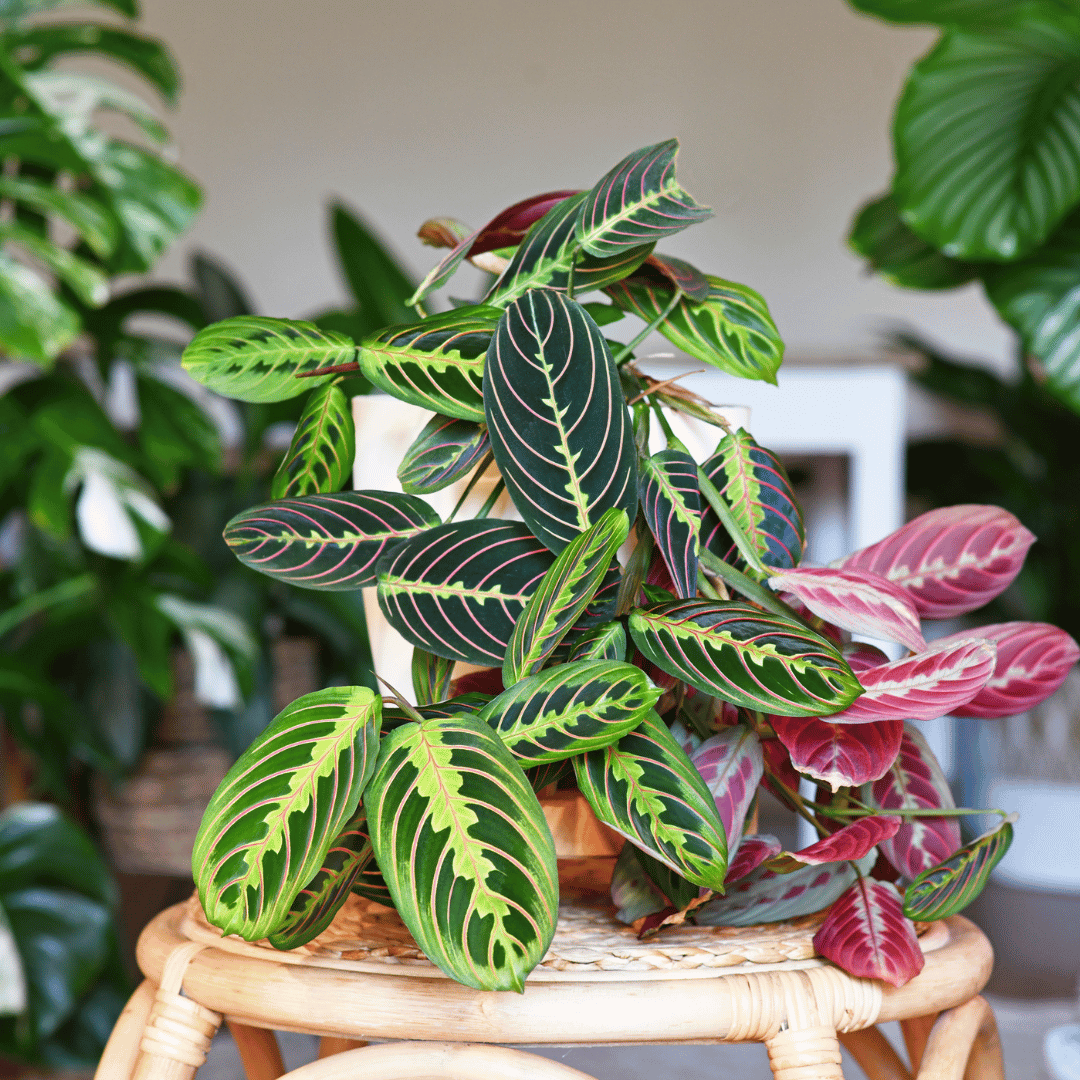
Buy Maranta's
Discover the unique charm of our collection of Maranta plants. With their...
-
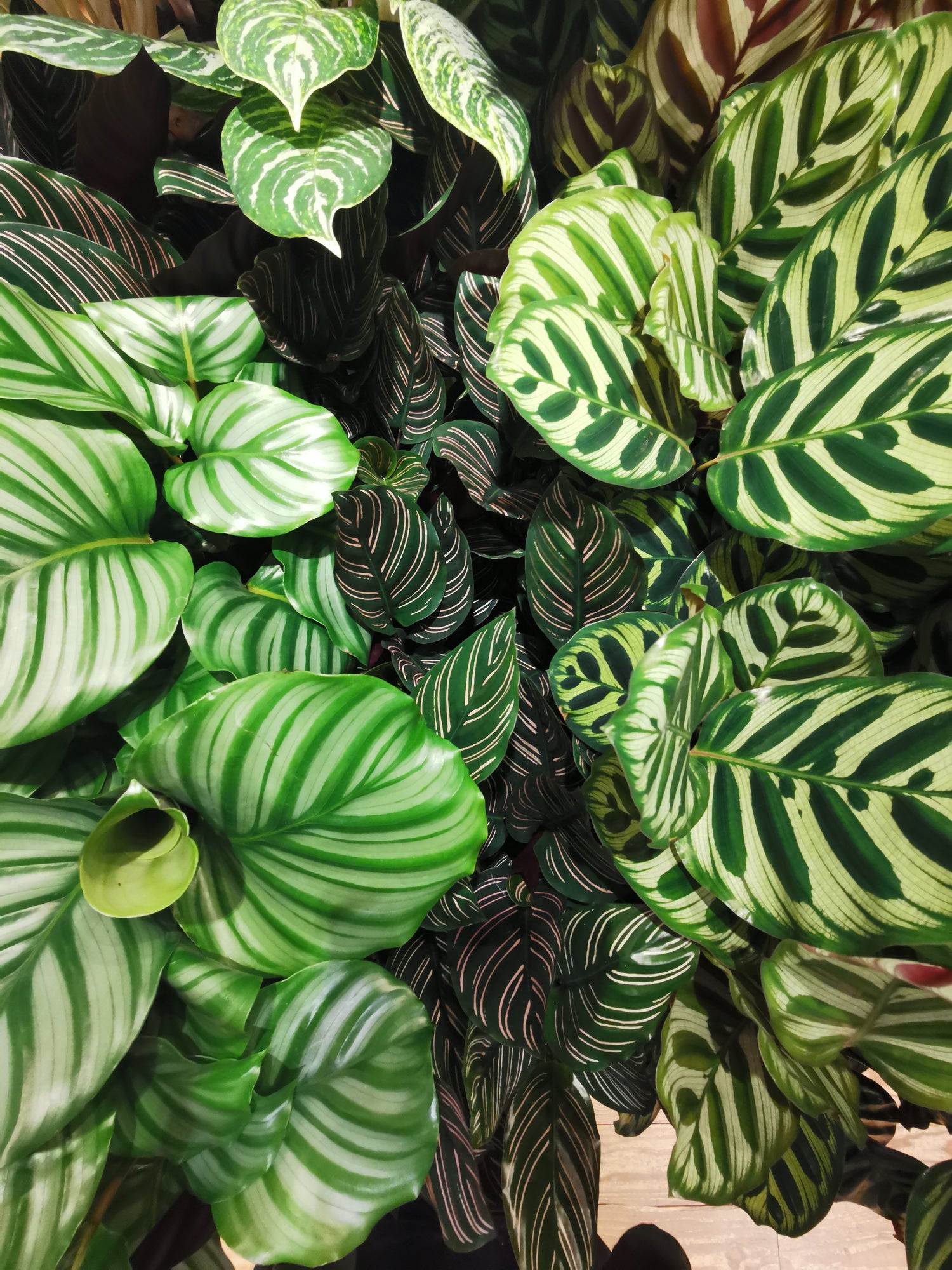
Buy Calathea
Are you looking for a beautiful and unique houseplant that will purify...
-
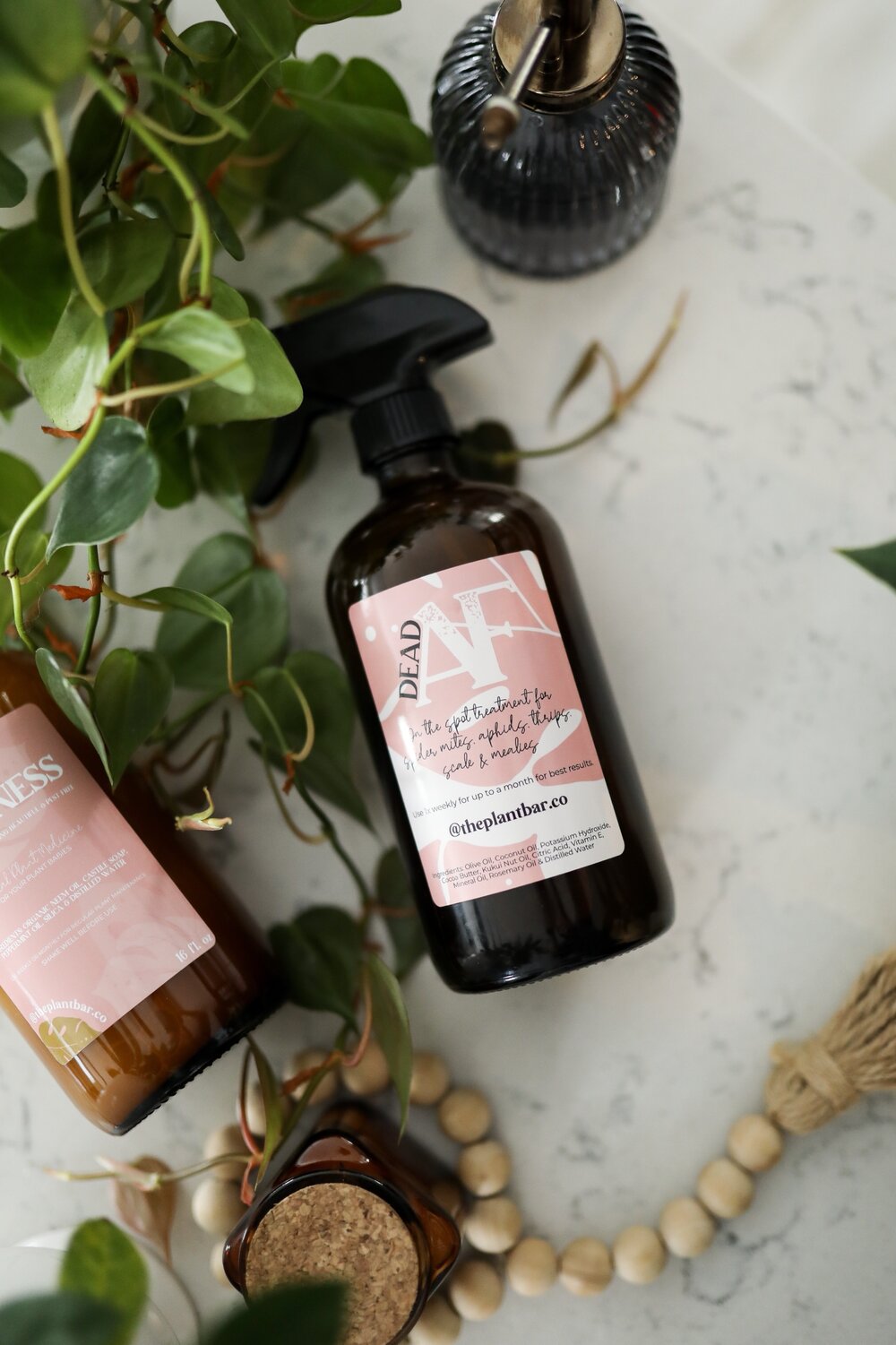
Accessories for Plant Lovers
In our store we have a wide variety of accessories to help...

